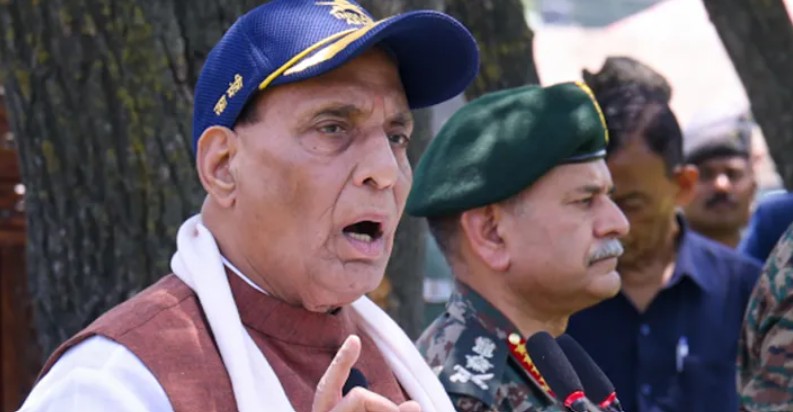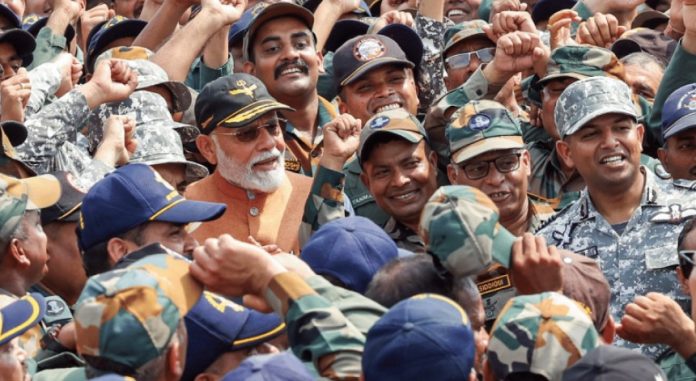In the volatile aftermath of India’s “Operation Sindoor,” a retaliatory military action targeting terrorist infrastructure within Pakistan and Pakistan-Occupied Kashmir, Pakistan predictably launched an extensive and insidious propaganda campaign specifically designed to instigate the Sikh community against India. This concerted effort, characterized by a barrage of disinformation and false narratives, aimed to exploit historical sensitivities and create communal discord within India, particularly in the strategically vital state of Punjab. However, these desperate attempts by Islamabad largely failed to achieve their malicious objectives, thanks to the vigilance of Indian authorities, the resilience of the Sikh community, and the swift debunking of Pakistani falsehoods.
The core strategy behind Pakistan’s propaganda during “Operation Sindoor” was multifaceted. Firstly, it involved blatant fabrications and the circulation of manipulated content to suggest that Indian forces were deliberately targeting Sikh religious sites, particularly gurdwaras, during their counter-terrorism operations. Foreign Secretary Vikram Misri, in a sharp condemnation, highlighted how Pakistan deliberately shelled places of worship, including gurdwaras, convents, and temples, as part of a “calculated strategy to provoke communal unrest and mislead the international community.” He specifically cited an attack on a gurdwara in Poonch, Jammu and Kashmir, on May 8, which tragically resulted in the deaths of three Sikh community members. Simultaneously, Pakistan-based accounts disseminated false claims of Indian drone attacks on revered Sikh shrines like Nankana Sahib in Pakistan, a lie promptly fact-checked and debunked by Indian authorities.
Secondly, Pakistan sought to sow discord within the Indian Armed Forces by propagating false narratives about internal strife, particularly targeting Sikh soldiers. Social media handles linked to Pakistan and pro-Khalistani elements widely circulated doctored videos, fabricated advisories, and AI-generated deepfakes claiming that Sikh personnel were rebelling against the Indian government and refusing to participate in operations. One particularly egregious example involved a video, later traced to a biogas plant protest in Ludhiana, being falsely presented as Sikh soldiers turning against the Indian Army in Amritsar. These baseless claims were amplified by Pakistani mainstream media outlets, attempting to project an image of chaos and mutiny within the Indian military. The clear intention was to undermine the morale of Indian troops and create divisions along religious lines.

Thirdly, Pakistan leveraged its traditional proxy elements, particularly pro-Khalistani separatists operating from abroad, such as Gurpatwant Singh Pannun of Sikhs for Justice (SFJ). Within hours of Pakistan’s Inter-Services Public Relations (ISPR) making outrageous and later disproven claims about Indian missiles from Adampur striking Amritsar, Pannun swiftly echoed this fabricated narrative. His provocative questions like “Why are Sikhs target?” immediately followed by inflammatory slogans such as “Modi’s missiles kill Sikhs – Khalistan is the answer!” clearly demonstrated his role as a willing proxy or mouthpiece for Pakistan’s pernicious propaganda machinery. These coordinated efforts aimed to incite fear and resentment among Sikhs and push their separatist agenda, aligning directly with Pakistan’s strategic interests.
However, Pakistan’s desperate attempts largely crumbled under the weight of their own falsehoods and the robust response from India. The Indian government, through official channels like the Press Information Bureau (PIB) Fact Check Unit, swiftly and systematically debunked each fabricated claim. For instance, the claims of an Indian Air Force female pilot being captured, or Indian forces attacking gurdwaras, were immediately refuted with concrete evidence and official statements.
Crucially, the resilience and unwavering patriotism of the Indian Sikh community played a pivotal role in rejecting Pakistan’s malicious propaganda. Leaders and members of the Indian Sikh community unequivocally condemned Pakistan’s disinformation. Harmeet Singh Kalka, President of the Delhi Sikh Gurdwara Management Committee, passionately stated, “Pakistan is claiming to be a well-wisher of Sikhs…The people of the nation know that Pakistan is the enemy of the nation and of Punjab. The youth of Punjab have been ruined due to drugs…We cannot expect Pakistan to give statements on love and brotherhood.” He further challenged Pakistan’s purported concern by highlighting the dwindling Sikh population within Pakistan itself, attributing it to forced conversions. Similarly, Balbir Singh, General Secretary of Saheb Mahant Sahib Ji Gurudwara in Poonch, directly rebutted Pakistani claims, confirming that it was a Pakistani bomb that touched their gurdwara’s boundary wall and asserting, “They are carrying out a propaganda… Not one, they (Pakistan) have hit three of our Gurudwaras… The Pakistan Army is infamous in the entire world. They are carrying false propaganda and are saying that the Indian Army is carrying out these attacks…”
Shiromani Akali Dal (SAD) president Sukhbir Singh Badal also lauded Prime Minister Narendra Modi’s “strong and clear-headed approach” and highlighted how “the Sikh community stood like a rock with the country during the crisis,” reiterating that “when the nation is threatened by external aggression, the Sikhs are its first line [of defense].” This collective rejection from within the Sikh community significantly undermined Pakistan’s attempts to create a communal divide.
Pakistan’s long-standing playbook of weaponizing religion and exploiting social fault lines has proven increasingly ineffective in the face of a more informed and unified India. The proliferation of real-time verification tools, open-source intelligence, and the heightened awareness among the public about disinformation campaigns have made it increasingly difficult for such crude propaganda to gain traction. Instead of achieving its objective of sowing discord, Pakistan’s desperate campaign merely exposed its own strategic bankruptcy and its continued reliance on state-sponsored falsehoods. The unity and resolve displayed by the Indian Sikh community during “Operation Sindoor” served as a powerful testament to their unwavering commitment to the nation, thwarting Pakistan’s malicious designs to instigate communal unrest.


